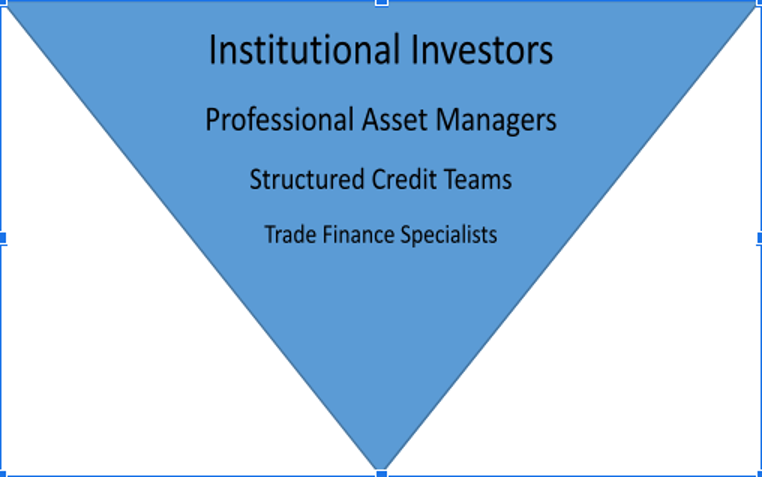Closing the Funding Gap: How Institutional Investors Are Using Trade Finance to Benefit Stakeholders
March 10, 2021
By John Galani
It’s no secret that we live in a world of low yields. Developed market bonds are negative in many cases, and emerging market countries are borrowing at rates they could have only dreamed of a few years ago.
For serial buyers of yield products – institutional investors such as pension funds, insurers and endowments – low yields make it harder for them to meet their liabilities. Even Warren Buffett said in his recent annual letter to shareholders, “bonds are not the place to be these days.”
But for investors who spend their days tackling this problem, a marketplace that’s centuries old is emerging to fill these gaps: trade finance for small and medium-sized enterprises (SMEs).
There exists a $1.5 trillion dollar funding gap for SMEs in trade finance, according to the World Trade Organization. (We think that number is probably higher, but we will save that for another post.) With a global opportunity that large, there is plenty of opportunity to produce meaningful and sustainable yields in an efficient, risk-managed way.
That said, we do not expect the world’s largest pension funds to be setting up their own trade finance desks any time soon. Like any other investment allocation, they will get their exposure through professional asset managers who employ specialists in this line of work.
The Four Layered Pyramid
In the course of our market observations, we are seeing the world’s largest asset managers win mandates from their institutional clients to allocate to multi-strategy credit opportunities. In turn, those asset managers are passing that capital to their structured credit teams, who pass it onto trade finance specialists. That is where Triterras gets involved.

The upside of the trade finance is that deal durations – what we call tenors – are short-term in nature and yields can be in the double digits. This is especially true in emerging markets where traditional sources of bank capital and US dollars are scarce. The downside, though, is there are few digital marketplaces where borrowers, lenders and structurers can source transactions with each other, verify all parties’ credit and identities, and ultimately fund deals in a timely fashion. Traditional securities markets around the world have had these mechanisms for over 20 years in some cases, but trade finance is a different beast. This is the problem Triterras is seeking to solve by digitizing archaic processes that used to take weeks to complete.
The Curious Case of Australia
There are other structural forces at work preventing institutions from allocating to the trade finance space at significant scale. One example, simply, is the weather.
Prior to the most recent harvest season, Australia suffered four years of drought, reducing yields on its grain crops and lowering profits for farmers. As such, banks that fund the exports of Australian grains have pulled back financing for commodities trading and working capital. This year though, Australia happens to have had a bumper crop year at a time of rising commodity prices. Great for farmers, lenders and suppliers? Not exactly.
The reality is that the banks traditionally financing such trades are not as nimble to easily expand their credit lines seasonally within their internal risk parameters now that the market has come back. Farmers having been battered by a down cycle cannot make up the shortfall. This funding gap opens up opportunities in a developed economy for trade finance specialists backed by investment funds, whose returns ultimately flow through to their institutional backers.
Being Part of a Holistic Solution
When banks retreated from certain activities after the Global Financial Crisis of 2008-09, investment managers and digital marketplace platforms helped fill funding voids in areas like consumer credit and direct lending to companies. We believe the same phenomenon is about to play out right now in trade finance.
We acknowledge that investment returns derived from our niche – trade finance transactions among SMEs in mainly emerging markets – will not alone solve institutional funding deficits globally. Each institution has its own asset allocation policy, portfolio construction and specific goals to invest towards, and we humbly admit that the risk-reward profile of trade finance may not be a fit for some investors.
But we do see ourselves as a tool in the greater credit investment ecosystem where we can be part of a more holistic solution for these asset owners and their beneficiaries by accelerating the mechanisms of global trade through our platform. Ultimately, many retirements, the funding of social services in developed markets and ESG in commodity exporting emerging ones will depend on it.